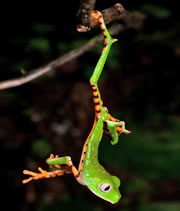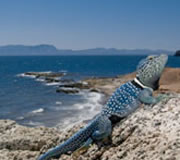|
OPPORTUNITIES
Join a Photographic Expedition
to the Amzon Rainforest

Purchase Photographic Prints
and Support Our Work

|
Studies of Ecuadorian Reptiles and Amphibians:
Conservation of Critically Imperiled Ecosystems
We are in our seventh year of study in Ecuador in which we document the incredible diversity of life in fragile and imperiled ecosystems. Our goals include discovering new species, understanding patterns of biodiversity, and providing sound management recommendations to save wild animals and places. So far, we have recorded nearly 6,000 animals in these rainforests, taken some 25,000 "keeper" photographs and discovered over 30 species previously unknown to science. Read on with the links to your right to find out more, and about how you can help! in fragile and imperiled ecosystems. Our goals include discovering new species, understanding patterns of biodiversity, and providing sound management recommendations to save wild animals and places. So far, we have recorded nearly 6,000 animals in these rainforests, taken some 25,000 "keeper" photographs and discovered over 30 species previously unknown to science. Read on with the links to your right to find out more, and about how you can help!
A first for us in 2010 is a research expedition to the Amazon rainforest at Rio Bigal Biological Reserve. See how you can join our Amazonian research team! See our application page for details.
Make our 40 peaks in 40 nights project a success! Donate today.
Photo galleries from our 2007-2009 expeditions are online.
Find out more about our work in our report of initial findings, available in English (pdf) and Spanish (pdf).
1 2 3 4 5 Next >> |
ECUADORIAN BIODIVERSITY PROJECT
Project Home
40 Peaks in 40 Nights
Documenting Biodiversity
Species Discovery
Study Sites
For its size, Ecuador is the most biodiverse country on earth. It holds about 8% of all amphibian species on Earth and 16% of all brids--all in a country about the size of Arizona!
Many tropical ecosystems are under dire peril--our study regions in western Ecuador are over 95% deforested!
You can help--donate today.
Find out how you can participate in a research expedition to the rainforests of Ecuador.
See photo galleries from our Ecuadorian research expeditions:
Summer 2008
January 2007
May 2007
August 2007
January 2008
|

